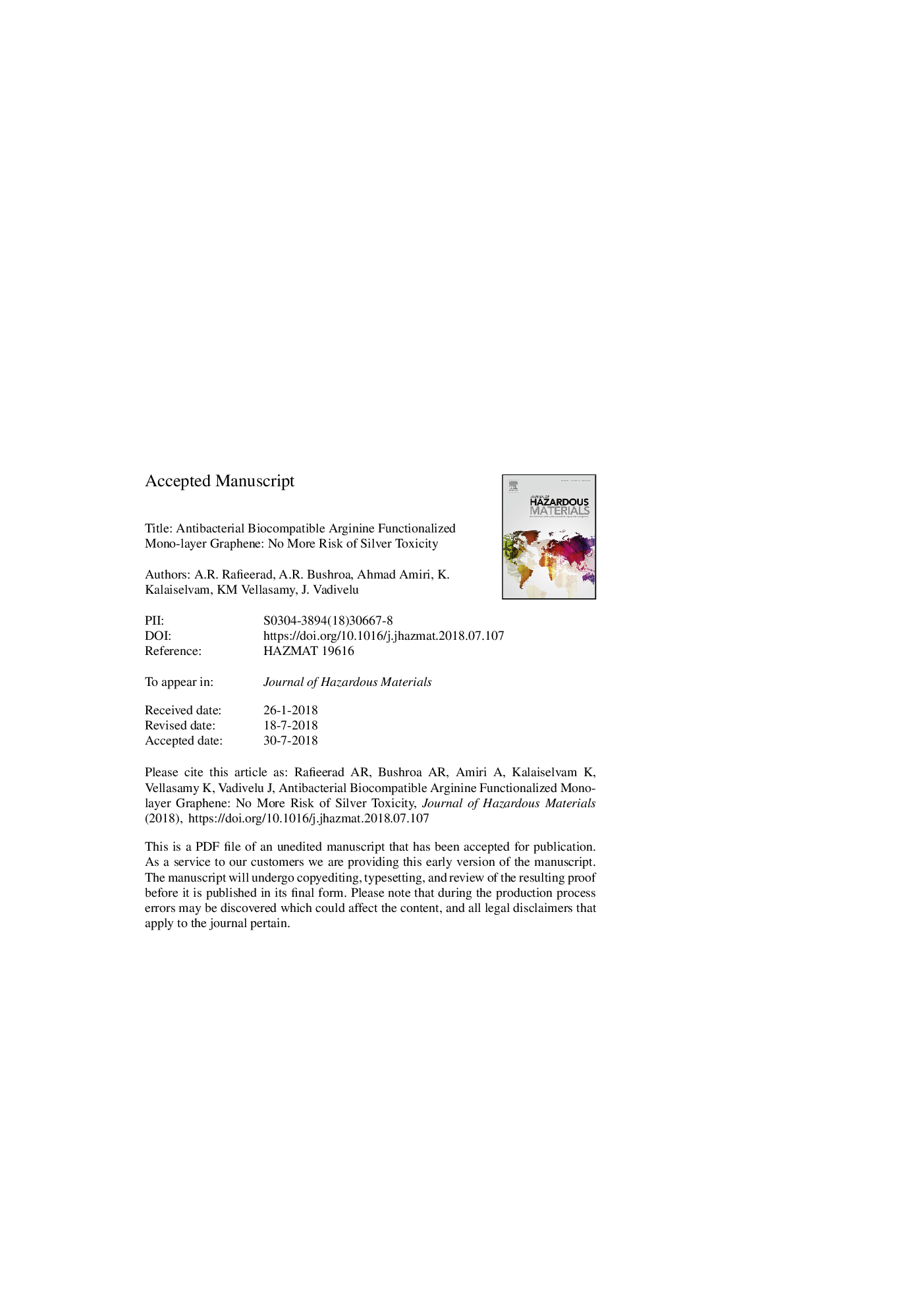| Article ID | Journal | Published Year | Pages | File Type |
|---|---|---|---|---|
| 6967733 | Journal of Hazardous Materials | 2018 | 24 Pages |
Abstract
Antibacterial ability is vital in biological approaches as well as functional biomaterials. Besides, cytocompatibility aspect of biologic media, tissue and organs is always concern for appropriate synthesis. From the past, metallic/oxide phases of silver (Ag) material in various macro, micro or nano configurations have been widely used for antibacterial targets. While, background of Ag toxicity within particle, film and composites is posing gradual ion release affected by molecular bounding. Recent researches conducted to control, optimize and neutralize Ag limitations finding the benefits of ideal (â¼ 100%) mediation against both Gram-negative and Gram-positive bacteria. Whereas, non-degradable releases history is still a challenge and its longer accumulation may cause to disrupt biostructures and disease risk. Thus, facile development of large-area organic materials with switchable bacteria toxicity and normal cell compatibility function is interesting for concerned approaches. Here, smart positively-charged stable arginine amino acid incorporated mono layer graphene (Arg-EMGr) nanobiocomposite introduced as useful antibacterial and safe bactericidal agent competitive with Ag direct. The immunity characteristic versus Escherichia coli (E. coli) and Staphylococcus aureus (S. aureus) comparably assessed with graphene oxide (GO) and different concentrations GO-AgNPs morphology. As cell viability matter, 1,3,5,7-days vitro culture assay shown attachment proliferation and cytotoxicity due to short interaction.
Related Topics
Physical Sciences and Engineering
Chemical Engineering
Chemical Health and Safety
Authors
A.R. Rafieerad, A.R. Bushroa, Ahmad Amiri, K. Kalaiselvam, KM Vellasamy, J. Vadivelu,
